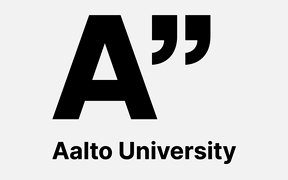Tips for using artificial intelligence for students
On this page you can find some tips and rules for using artificial intelligence in learning.

Guides for the use of artificial intelligence in teaching and learning have been released at Aalto University. The use of artificial intelligence is seen as a possibility for learning, and it is allowed to use AI to support learning. However, it should be noted that the course teacher has always the right to restrict the use of artificial intelligence in a course or a learning task if it is necessary to achieve the learning objectives.
How do I use AI responsibly in my courses?
- Pay attention to course practicalities: The course-specific restrictions on the use of artificial intelligence can be found in the course syllabus (kurssiesite) or in the learning task description. Note that in some learning tasks of the course the use of artificial intelligence may be allowed whereas in others it may not be. If you are unsure whether you can use a specific system or application in completing the task, always contact the course teacher. For example, language checking or translation programs often rely on artificial intelligence, and therefore, text generated by such programs is easily identified as being produced by artificial intelligence in automated checking systems like the Turnitin plagiarism detecting tool has.
- Use AI-generated content ethically: Mark the content generated by artificial intelligence in your text and include references to the name of the AI model or service, the date, and when the content was generated. If the teacher has not requested another type of citation, you can refer to the page "How to cite ChatGPT" on apa.org for more detailed instructions. Do not present content generated by artificial intelligence as your own. Also keep in mind that large language models as a software are not accountable for the text they generate. Although referencing indicates that a certain text is not an original idea, the student as the author of the assignment should carefully examine the content of the text before using it. You can find citation guidelines for AI-generated content in the LibGuides service.
- Respect copyrights: You should not upload answers produced by other students into external systems without permission. For example, when conducting peer evaluations, it is important to be cautious and avoid processing other students' texts using systems like ChatGPT. Read about the use of AI systems and copyright regulations.
- Observe academic integrity: If you intentionally use artificial intelligence in violation of the restrictions set by the course instructor for a specific course or learning task, it may be considered as academic misconduct and will be handled according to the specified processes.
-
How can I take advantage of AI in learning?
- Writing, reading and ideating with AI: If the use of artificial intelligence is not restricted in the course or assignment, you can explore whether AI is helpful, for example, in text summarisation, translations or language proofreading. When beginning to compose your answer, you can brainstorm with the AI. You can ask questions and request additions to the text or get feedback on the text to improve your work. However, note that large language models like ChatGPT are designed to generate text but cannot critically assess the resources in their database, which means they may produce content that is factually incorrect or reference non-existent sources. Always double-check the content and sources generated by AI tools. In the end, you are responsible for the work you submit.
- AI as a study-buddy: Large language models, such as ChatGPT, can be used in an interactive manner to test your knowledge, to deepen your understanding or to provide alternative perspectives. You can ask AI to, for example, create assignments, problems or quizzes on topics that you are currently studying. You may also ask how AI defines some of your course’s key concepts and compare them with your course literature. Additionally, you can discover how different concepts are connected. Again, remember to evaluate critically the content AI generates, keeping an eye out for biases and inconsistencies.
- AI as a mentor: AI can also function as a mentor to refine your ideas. You can ask it to pose deeper questions about your text or present counterarguments to help you strengthen your own arguments by anticipating possible criticism. AI can assist you with familiarising yourself with new or challenging topics by generating summaries and introductions on various subjects. Additionally, it can provide hints on the key sources or authors in a particular field. However, always verify this information from other reliable sources.
- Translating: text can be translated into different languages quickly by using AI. Software that is used for translation often relies on AI. Bear this in mind especially for assignments where the use of AI is prohibited.
-
Following a lecture in another language: AI also enables live captioning of online lectures, which can be utilised for language learning, for example, by following a Finnish online lecture with English subtitles.
See also AI in Aalto
Guidance for the use of artificial intelligence in teaching and learning at Aalto University
Guidance for the use of artificial intelligence in teaching and learning at Aalto University.







